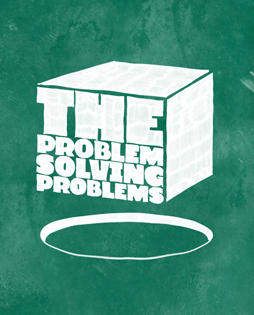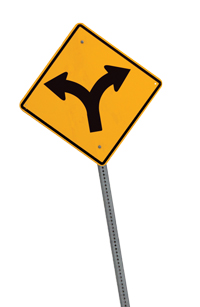Finding a solution that’s right rather than perfect.
 It is quite ironic that problem solving is such a problem in and of itself. Big or small, business or personal, not a day in our life passes when we are not presented with some sort of problem to solve. And no matter the type, there is one thing in common with every problem out there – the desire for a solution.
It is quite ironic that problem solving is such a problem in and of itself. Big or small, business or personal, not a day in our life passes when we are not presented with some sort of problem to solve. And no matter the type, there is one thing in common with every problem out there – the desire for a solution.
“We can’t solve problems by using the same kind of thinking we used when we created them.” These wise words were spoken by Albert Einstein and represent the first hurdle we face when it comes to solving problems. I have seen it time and time again: when people try to solve problems, the solution they come up with usually makes things harder than they were before. You’ve probably experienced this yourself. Let’s say there is a problem with an internal form in your organization. What is the solution to this problem, more often than not? Another form that you need to fill out before or after that form.
The form-upon-form problem illustrates the first mistake we make when we try to solve problems. Problems are like onions, they are layered. Under every problem is often another problem, and another below that. More often than not, we are not attempting to solve the correct problem. Ask yourself, and your team, “Why are we trying to solve this problem?” When given justification, ask “Why is this a problem?” On the surface this may seem silly and circular, but if you or your team cannot reasonably justify the root of the problem, then you are trying to solve the wrong problem.
Once our true problem is discovered, we’re ready to find a solution. The right solution. This is the hard part. For every problem there are endless solutions. Many are bad, some are good, fewer are great and one is the best. Do not be fooled by what seems to be the perfect solution, though, for it is almost never the right solution for the problem. This may seem ludicrous, but the “perfect” solution is often unattainable for many reasons – time, money, manpower and politics to name a few. It oftentimes has too many hurdles and roadblocks. You will become paralyzed and all progress will stagnate trying to implement it.
 Instead of fixating on the perfect solution, focus your attention on the good and great ones. The right solution will address as many aspects of the original problem as possible while also being the easiest overall to implement. This will likely mean that there will be some compromise. Accept that problem solving is a never-ending cycle. Your solution will inevitably introduce new problems or fail to address some aspects of the issue fully. Do not consider these perceived shortcomings as failures. On the contrary, they are expected side effects of the process. Remember, the perfect solution is usually unattainable.
Instead of fixating on the perfect solution, focus your attention on the good and great ones. The right solution will address as many aspects of the original problem as possible while also being the easiest overall to implement. This will likely mean that there will be some compromise. Accept that problem solving is a never-ending cycle. Your solution will inevitably introduce new problems or fail to address some aspects of the issue fully. Do not consider these perceived shortcomings as failures. On the contrary, they are expected side effects of the process. Remember, the perfect solution is usually unattainable.
Stephen Covey, the author of The Seven Habits of Highly Effective People, once said “The way we see the problem is the problem.” You have to establish the right problem. Then remember that problem solving is a continuous cycle. There is no end. Some of your solutions will succeed, others will fail. Even the good solutions will reach a point where they are no longer effective. Accept this and embrace the cycle. Do the best you can at that very moment with what you have, and then take all the experience and knowledge you’ve gained and do better with it the next time. And, without a doubt, there will be a next time.



